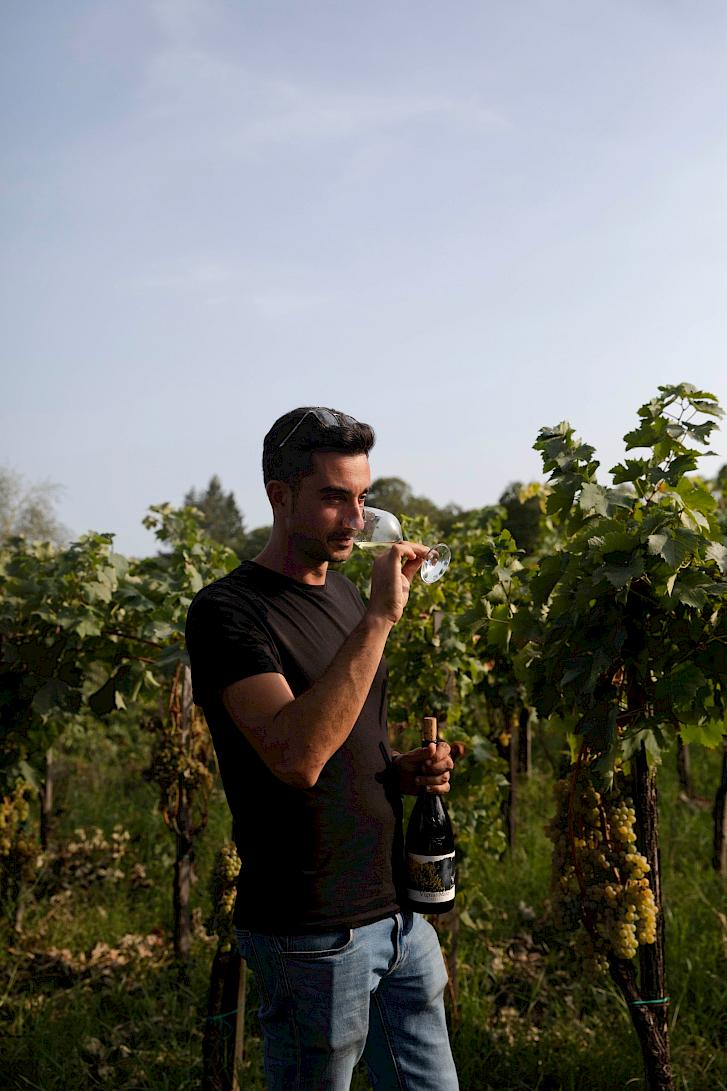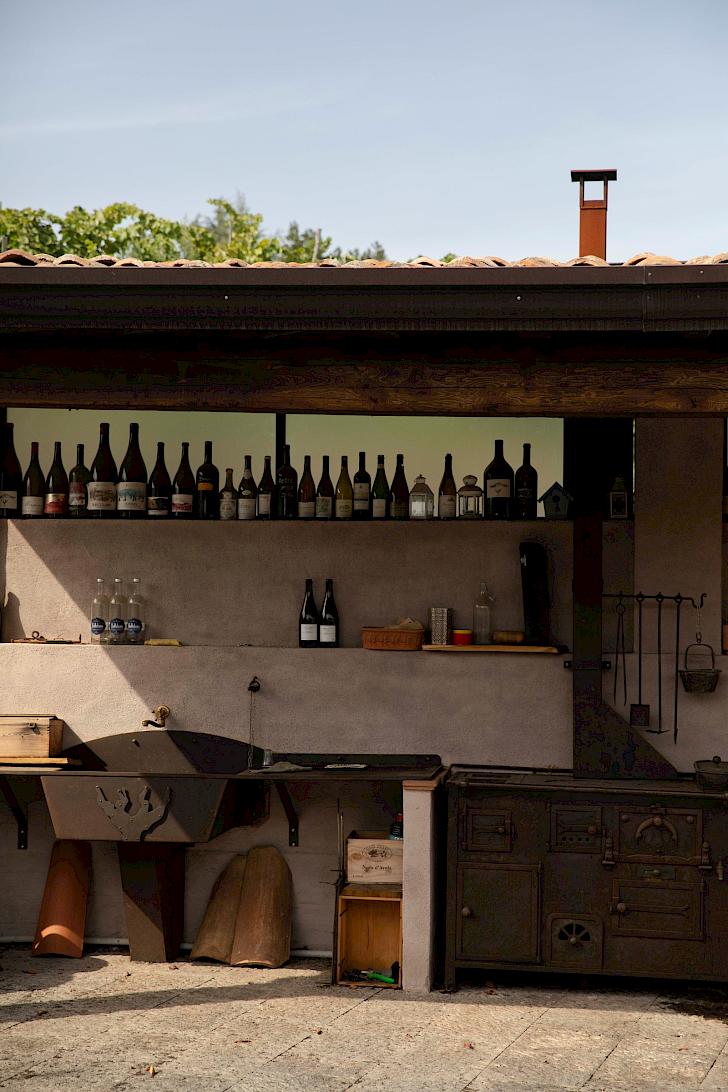Written by Mara Giamboi
photography by Yeelen Tavilla
modified 21 October 2024
8 min. read
Why visiting the Etna wine region will be one of the highlights of your Sicily trip.
Mount Etna, not only one of the world's most active volcanoes, but also one of the oldest and most important wine regions of Sicily. We dived into the fascinating world of Etna wines and spoke with Simone Foti, a young winemaker who, together with his father and brother, passionately runs the family winery I Vigneri on Etna. We discussed their vision and what it means to be a winemaker at the foot of an active volcano.
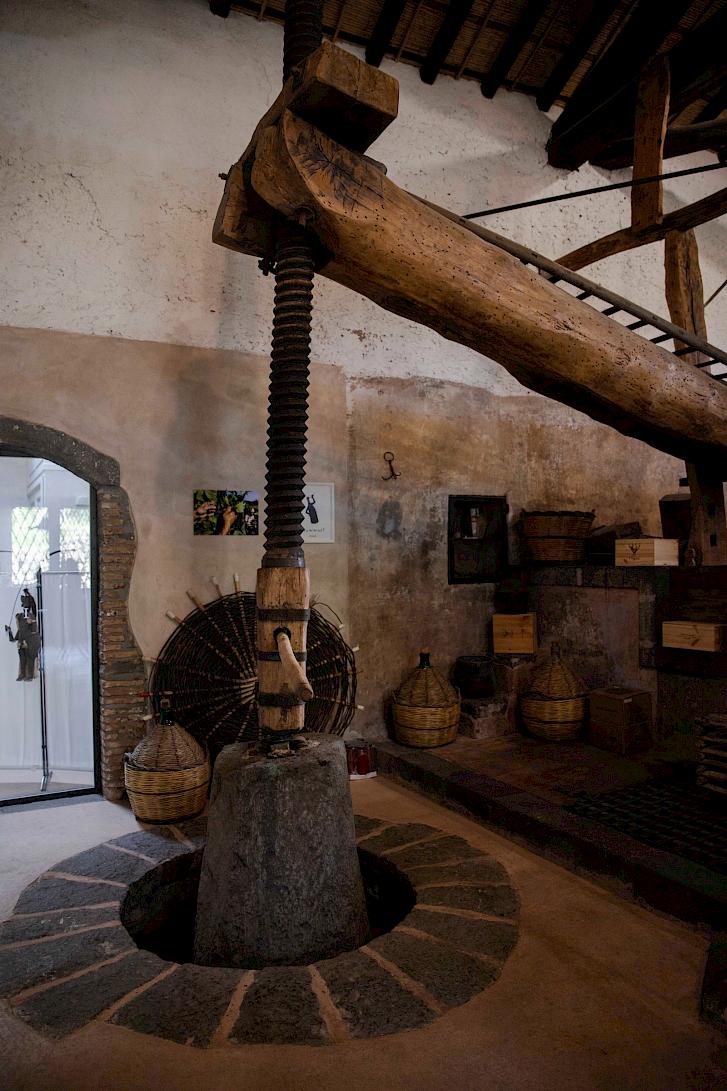
An introduction to Etna wines
Etna wines, known for their unique flavors resulting from volcanic soil, are gaining increasing popularity today. However, only a short time ago, the Etna region was known as the poor part of Sicily. Few people believed in Etna, its vineyards and its wines.
Nowadays, Etna wine is considered as one of the most captivating wines of Italy, thanks to its fertile soil, high-altitude vineyards, proximity to the sea, and unique climate. Ancient grapes like Nerello Mascalese (red wines) and Carricante (white wines) dominate the area, creating energetic wines with a rich depth of flavor, remarkable minerality, and earthy, smoky undertones.
Those who have visited the region will remember the unique terraces, remnants of Roman history, designed to make work on extremely steep slopes easier. It’s a region rich in traditions, such as the centuries-old palmento, another Roman invention: a lava stone structure featuring a permanent system of stone containers that uses gravity to channel wine into barrels - a cherished heritage on Mount Etna.
In recent years, Etna wines have gained international recognition, celebrated for their refinement and the way they express the unique environment in which they are produced.
An increasing number of young winemakers, from Burgundy to Hong Kong, are drawn to Etna for the special conditions the volcano has to offer.
The rise of Etna wines has not gone unnoticed by wine enthusiasts, who travel from afar to visit places like Cave Ox in the secluded town of Solicchiata, a restaurant with an exceptional cellar of Etna wines. The same goes for the wine bar Il Buongustaio dell'Etna, a few kilometers away in Randazzo, which is one of the few villages that have survived all historic volcanic eruptions.
To understand the secret behind the exceptional Etna wines, as well as their history and traditions, we visited I Vigneri - a highly passionate family business with a strong vision, passed down from father to sons, and the only ones still actively using the traditional palmento.
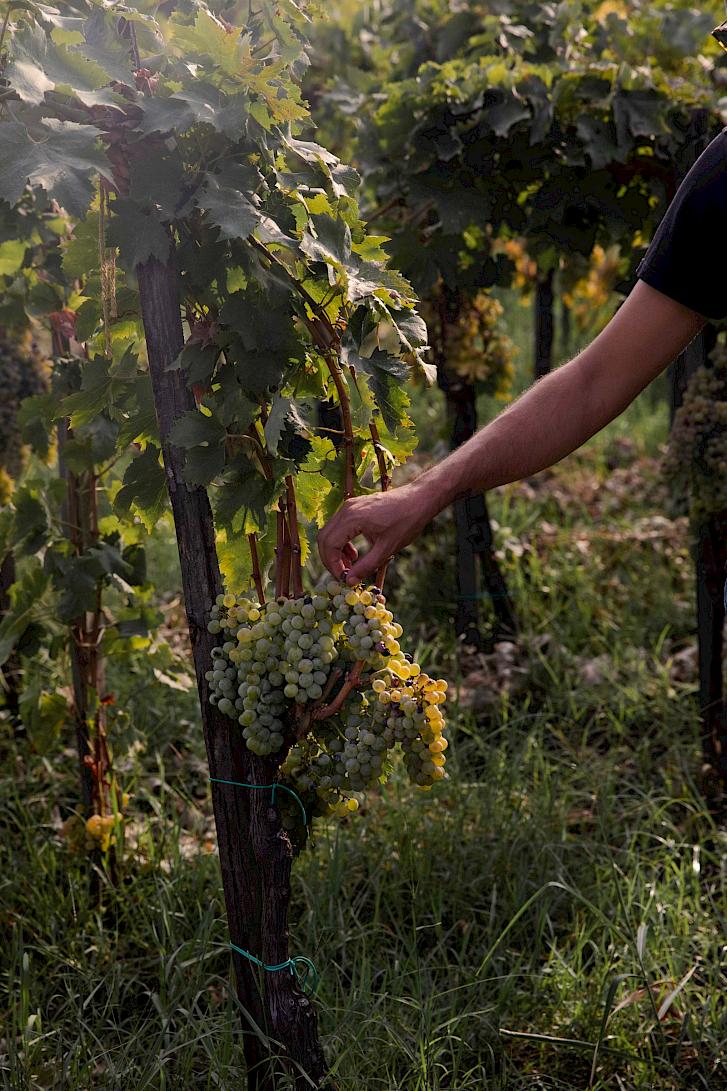
A domenica spent at I Vigneri
To celebrate the end of the week, on Sundays, or “la domenica”, Italian families gather for lunch or dinner. In the countryside, Sunday is the only day when no work is done. The family behind I Vigneri invited us to spend a Sunday at their stunning vineyards, located in Milo, on the border of Parco dell’Etna right between the smoking volcano and the sea.
We spoke with young winemaker Simone Foti, who, along with his father Salvo and brother Andrea, represents the family business I Vigneri, about their vision and motivation to dedicate their lives to producing Etna wine despite the many challenges that Etna presents: “For us, winemaking isn’t just a job - it’s our whole world, our life’s work.”
Reviving traditions
“It all started with my father, who started making wine on Etna more than thirty years ago. He was convinced that, in order to produce Etna wines, he first needed to immerse himself in their history. During that time, his vision was directly opposed to that of other winemakers on Etna. He was at the forefront of reviving traditions in Etna wines.
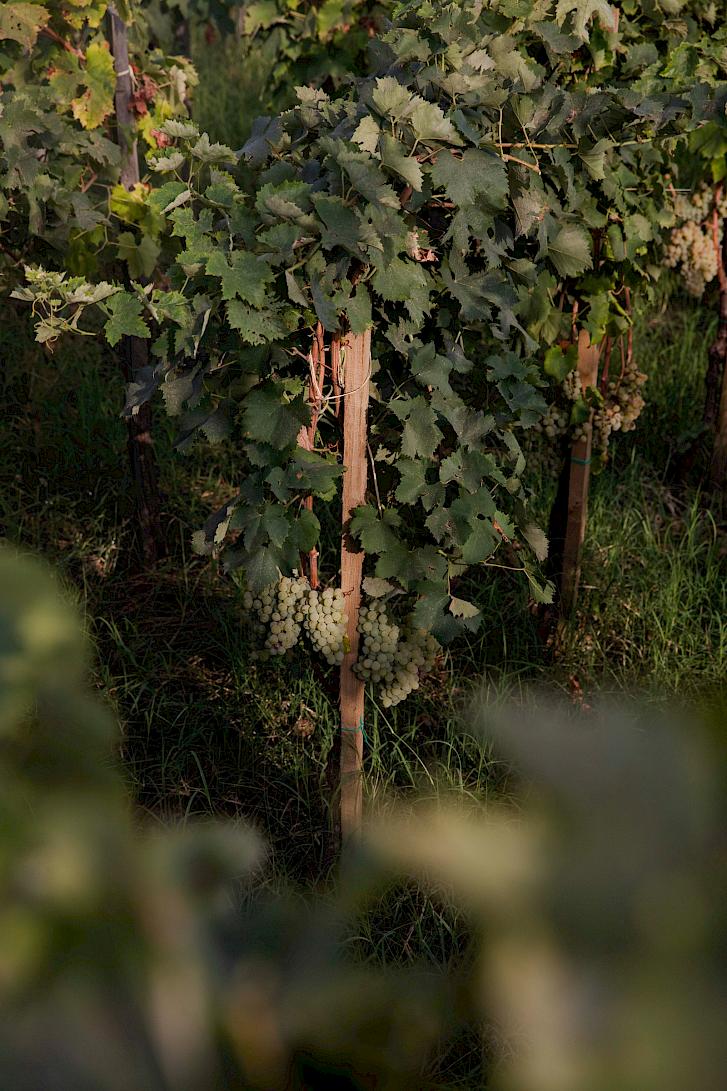
For us at I Vigneri, it’s important to honor the history and traditions of Etna wines while giving them new life through a fresh approach. Our vineyards are cultivated using the traditional Alberello Etneo method, with every step - from tying the vines to harvesting - carried out by hand. We’re also proud to say we’re the only winemakers that still use the palmento. We believe that using our palmento, which dates back to 1840, adds more identity and value to our wines, it ties them to the rich history of Etna winemaking. Every year, after the harvest, we gather in a large group. We stomp the juice out of the grapes with our feet - the first step of the palmento tradition. Since it’s physically demanding work, we always serve a special ‘palmento menu’.”
Making wine on Mount Etna
“People often think that life cannot thrive near a volcano - that it’s only destructive - but most of the time, we see the complete opposite. Making wine here comes with many benefits: the richness, the fertile soil. You can definitely taste the effects of the volcano in our wines, which gives them a distinct identity.
However, winemaking at the foot of Mount Etna also comes with challenges. Due to the constant risk of eruptions, our vineyards are always in danger - we regularly find our land covered with lava stones. In a single day, the lava could easily destroy everything.
Additionally, we’re worried about global warming and its impact on our wines. The increasingly warmer and drier seasons are altering the climate; nowadays, you can even harvest avocados, bananas, and mangoes here. To adapt to the rapidly changing terroir, we strive to incorporate as much biodiversity as possible. We believe it’s crucial to respect the land and continuously listen to what nature is telling us.
Our secret? The love and attention we put into everything we do, every day, to create the best product in the most artisanal way. That’s why my father always likes to talk about ‘human wine,’ which describes how the taste of the wine depends on the person behind it.”
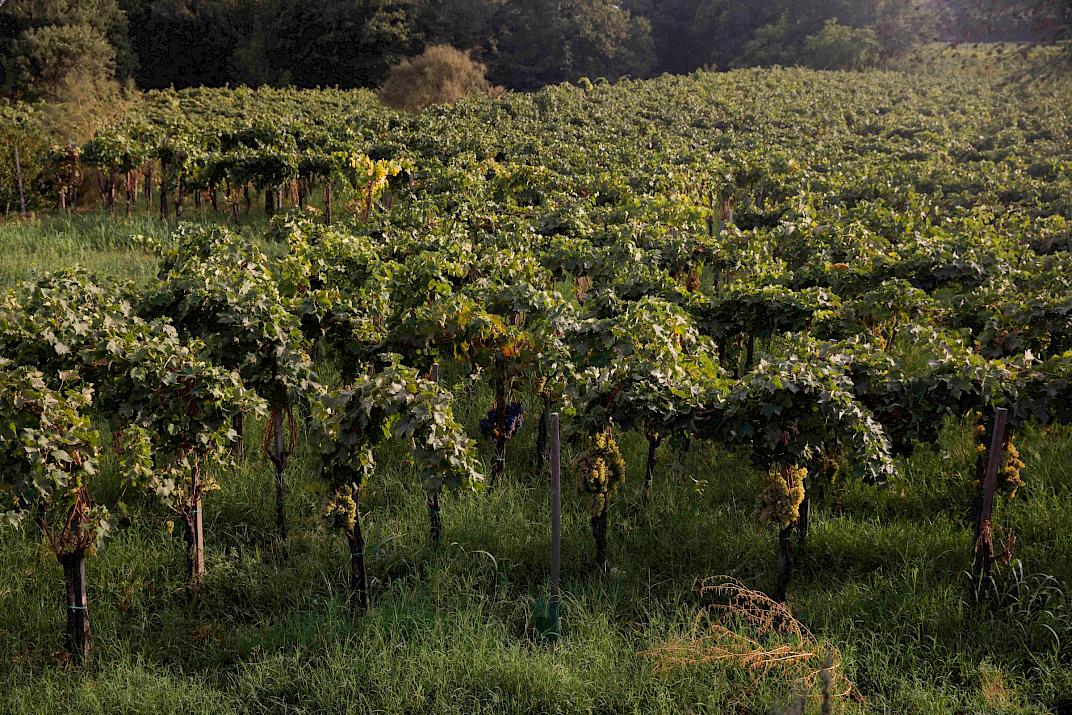
The best place on earth
“You could say we have a love-hate relationship with Etna. On one hand, we curse the volcano when an eruption affects us. There are days when we almost lose our energy. But then there are moments when we see the volcano towering behind our vineyards, with its snow-capped peak, or when we enjoy a beautiful glass of Etna wine and think, “This is the best place on earth”.
The moments we share our wines with people all over the world give us the strength to keep going. That’s what it’s all about for us. For us, winemaking isn’t just a job - it’s our whole world, our life’s work.”
Recipe & wine pairing
We concluded our memorable visit to I Vigneri with a festive lunch with la famiglia. Together, we prepared some seasonal dishes in their beautiful outdoor kitchen. Our favorite was the semi-traditional Sicilian crostini with stracciatella, anchovies, and fried sage. We asked Simone to pair it with one of their exquisite wines.
Recipe
Crostini with stracciatella, anchovies and fried sage
6-8 persons
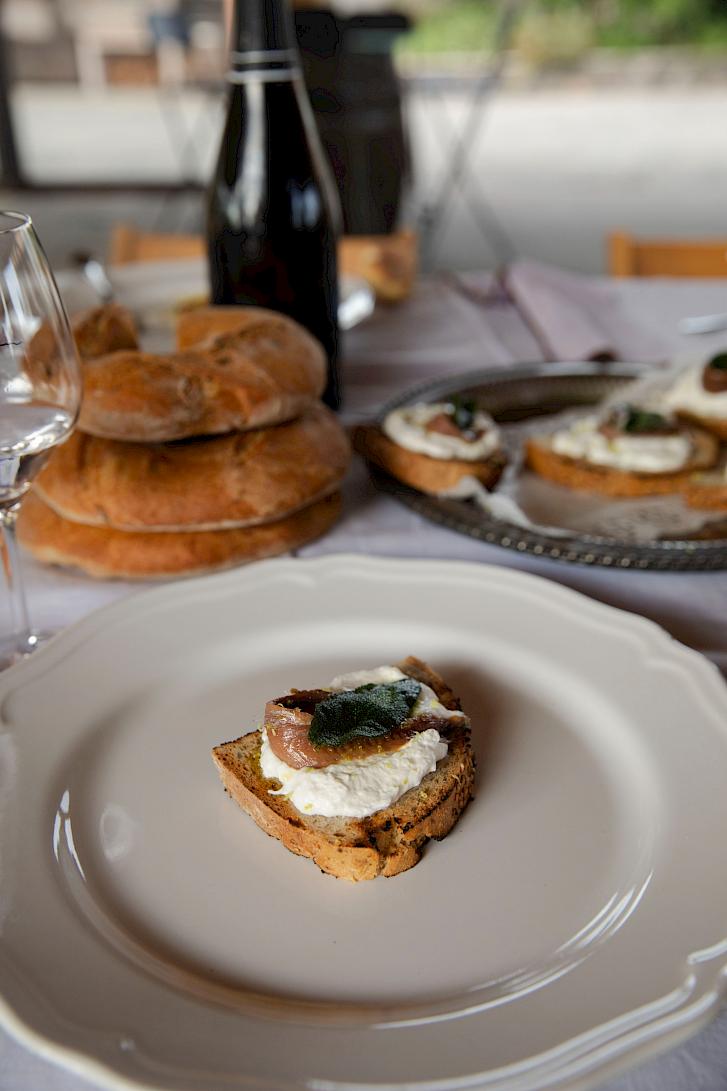
The combination of soft, creamy stracciatella with salty anchovies and crispy fried sage results in a delightful harmony of flavors and textures. The perfect appetizer for a festive lunch or dinner.
Ingredients
- sunflower oil
- a handful of whole sage leaves
- half bread or one baguette, cut into 1/2-inch-thick slices
- 2 cups stracciatella
- 8-10 anchovies preserved in oil, good quality
- extra virgin olive oil
- zest of one lemon
Preparation
Preheat the oven to 400°F (204°C).
Fill a heavy-bottomed skillet with a generous amount of sunflower oil and place it over low to medium heat. Heat the oil until it lightly simmers. Then, add the sage leaves in a single layer to the pan. Keep a close eye on them; it only takes about 30 seconds for them to become crispy. Remove them with a slotted spoon and drain on a plate lined with paper towels.
Place the slices of bread on a baking sheet and drizzle with olive oil. Toast them in the preheated oven for 8-10 minutes, until they are lightly browned. You can also grill the slices of bread or toast them over an open flame.
Generously spoon the stracciatella over the slices of bread. Place an anchovy on each slice, then drizzle with a bit of extra virgin olive oil. Add a sprinkle of lemon zest and finish with a fried sage leaf on each crostino.
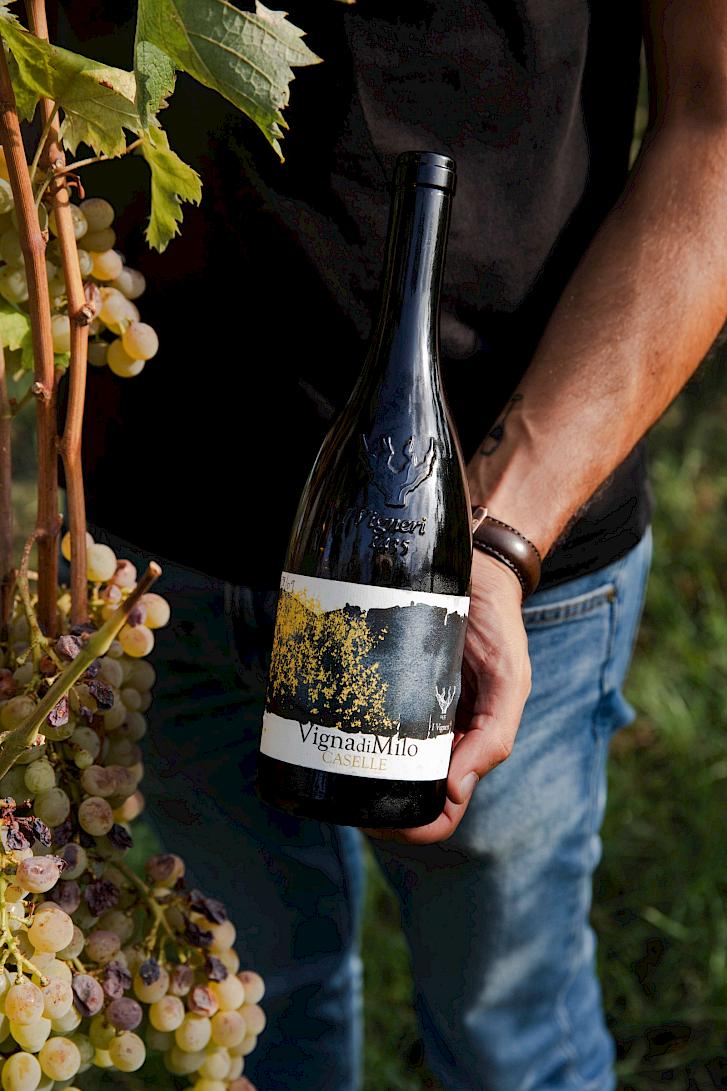
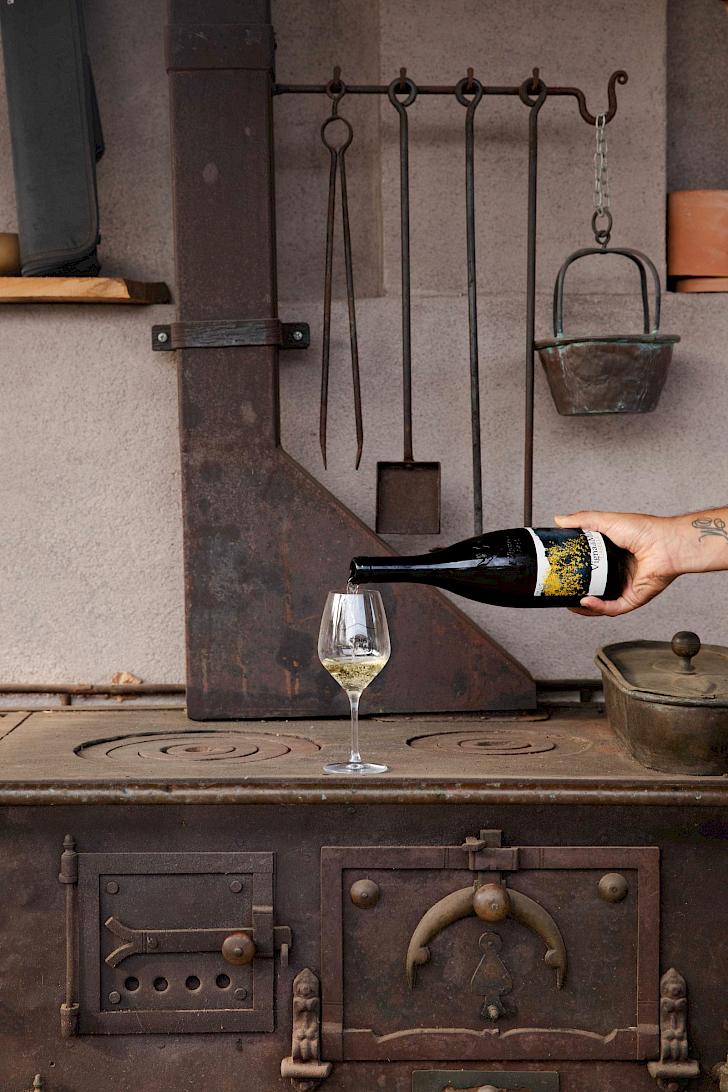
Wine pairing
By Simone Foti from I Vigneri
The creamy stracciatella, salted anchovies, fried sage, and lemon zest in this dish pair wonderfully with the citrus notes and herbal nuances of this wine, Vigna di Milo, which represents the typical Carricante grape. This fresh yet full-bodied wine, with its remarkable balance of saltiness and minerality, complements delicate dishes like this one perfectly.
More about I Vigneri
For more info about I Vigneri, visit https://www.ivigneri.it/en/
Visiting the Etna wine region
A visit to the Etna wine region is a must for any trip to Sicily. Explore historic wineries like I Vigneri, where traditional methods are paired with stunning views of the active volcano. Finish your day at the renowned Cave Ox or the cozy wine bar Il Buongustaio dell'Etna. Tasting Etna wines amidst this unique landscape is an unforgettable experience.
Do you also want to discover Sicily? Have a look at our holiday villas in Sicily here.
Mara Giamboi & Yeelen Tavilla
Mara Giamboi and Yeelen Tavilla are two Dutch-Sicilian creatives who combine their talents to celebrate Sicilian culture through food and visual storytelling. Mara, a (culinary) writer, recipe developer and food stylist, and Yeelen, a photographer and allround creative, both draw deeply from their shared Sicilian roots.
